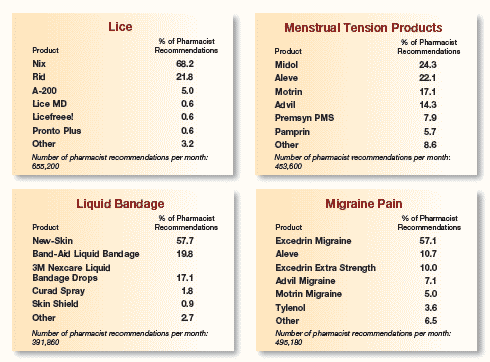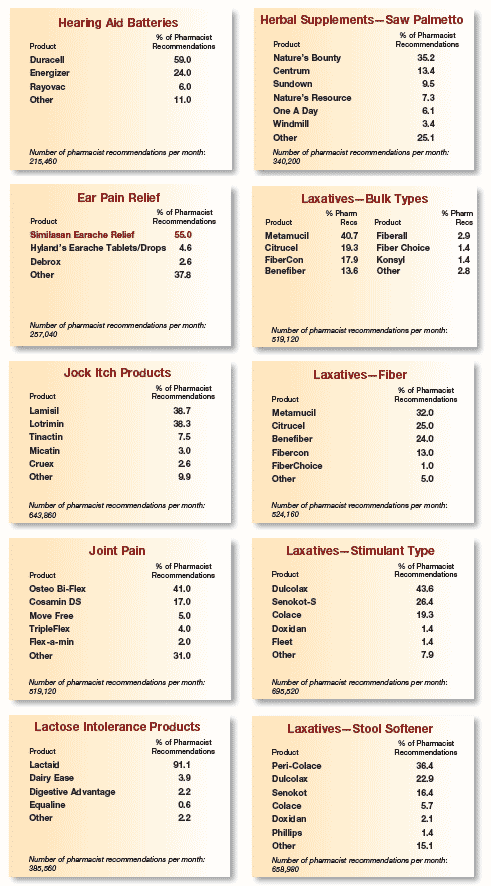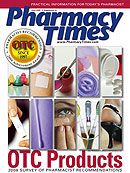Publication
Article
OTC Guide
Choosing Wisely: Making the Right OTC Selections for Children
Author(s):
Ms. Terrie is a clinical pharmacy writer based in Haymarket, Virginia.
With the array of OTC products available, the selection of an appropriate product may be overwhelming and confusing for many patients and caregivers. This is especially true when choosing medications for children, because of differences in physiology and pharmacokinetics, lack of clinical data, insufficient drug labeling, and problems related to drug dosing and administration.1
Pharmacists should encourage parents and caregivers to seek advice from their primary health care provider prior to using OTC products, especially in children under 2 years of age.1 Before recommending any products, pharmacists should assess the patient?s physical and medication history?as well as any allergies?to screen for possiblecontraindications.
Special Formulations for Children
Pharmacists should stress the importance of using products formulated especially for children and provide information about the OTC medications that are available in various therapeutic categories and formulated in different flavors and in several dosage forms, such as chewable tablets, liquids and suspensions, disintegrating and dissolvable tablets, and thin strips. Children vary in weight and size; thus, their caregivers always should read labels for dosing guidelines based upon age and weight before administering any medicine2 and, if in doubt, consult their pediatrician or pharmacist to prevent dosing errors.
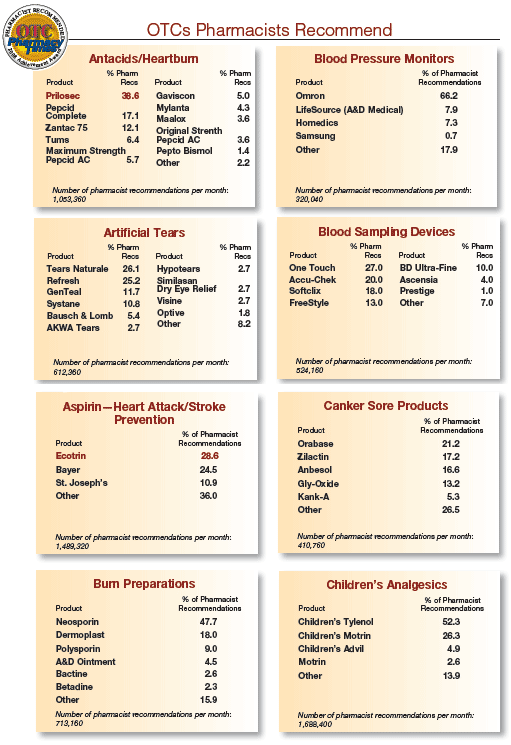
When recommending any OTC products, pharmacists should ensure that parents and caregivers are counseled effectively on the appropriate use of the selected agent, including dosage, dosage intervals, route of administration, and recommended duration of use. If a liquid dosage form is recommended, pharmacists always should stress the importance of using a calibrated measuring tool to ensure accurate dosing. The American Academy of Pediatrics Committee on Drugs recommends the use of calibrated measuring devices for dosing accuracy and easy administration.1
Therapeutic Duplications
Pharmacists can be instrumental in identifying therapeutic duplications when multiple medications or combination medications are used. They should remind parents and caregivers always to read the medication labels to confirm dosage, especially because many infant formulations of analgesics are in concentrated form, and to check for active ingredients in order to avoid therapeutic duplications.
References
- Isetts, B, Brown, L. Patient Assessment and Consultation. In: Berardi R, Kroon L, Newton G, et al, eds. Handbook of Nonprescription Drugs. 15th Edition. Washington, DC: American Pharmacists Association; 2006:26-29.
- Precautions with Over the Counter Drugs. Merck Manual Web site. www.merck.com/mmhe/sec02/ch018/ch018b.html.
Patient Counseling Tips for OTC Drug Use in the Pediatric Population
- Always read labels prior to administration, and check expiration date prior to use
- Always adhere to dosing and administration guidelines. Never exceed recommended dose.
- Always use calibrated measuring devices for liquid medications
- Always consult your pediatrician or pharmacist if unsure about the use of any medication
- Always keep medication out of the reach of children
- Always contact a primary health care provider if the child experiences any adverse effects, the condition worsens, or shows no sign of improvement
- When in doubt, ALWAYS ask your pediatrician or pharmacist
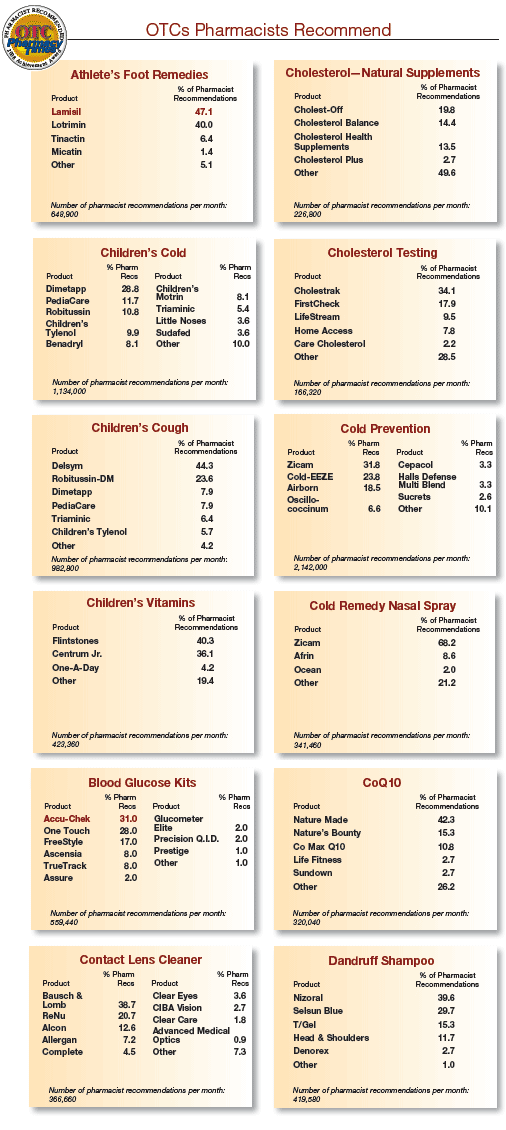

The markets for Rx-to-OTC switches could hit $5 billion in 2008 and increase by nearly 40% by 2010, according to the report, The Return of the Rx to OTC Switch: Market Analysis and Product Management Strategies, from Kalorama Information.
The report suggested that more than half of the 2008 revenues will be from allergy medications that already made the switch, such as Claritin (loratadine), Mucinex, and Zyrtec (cetirizine HCl).
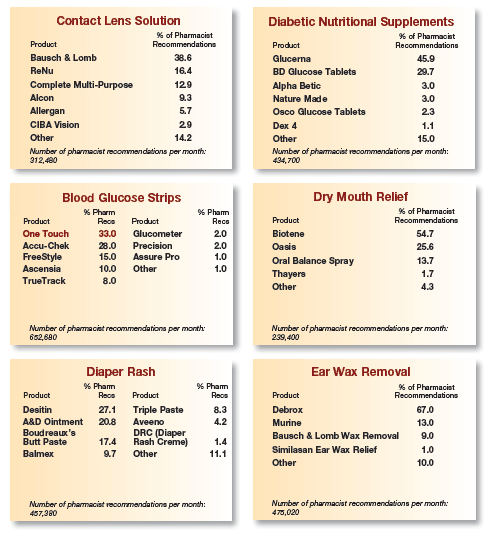

The Centers for Disease Control and Prevention reported that approximately 7000 US children under the age of 11 years are treated each year in hospital emergency rooms (ERs) due to problems with cough and cold medications. The study, reported in Pediatrics (April 2008), found that children aged 2 to 5 years made up 64% of all ER visits for adverse reactions to cough and cold medications. Of these children, 80% of the problems stemmed from unsupervised ingestions.
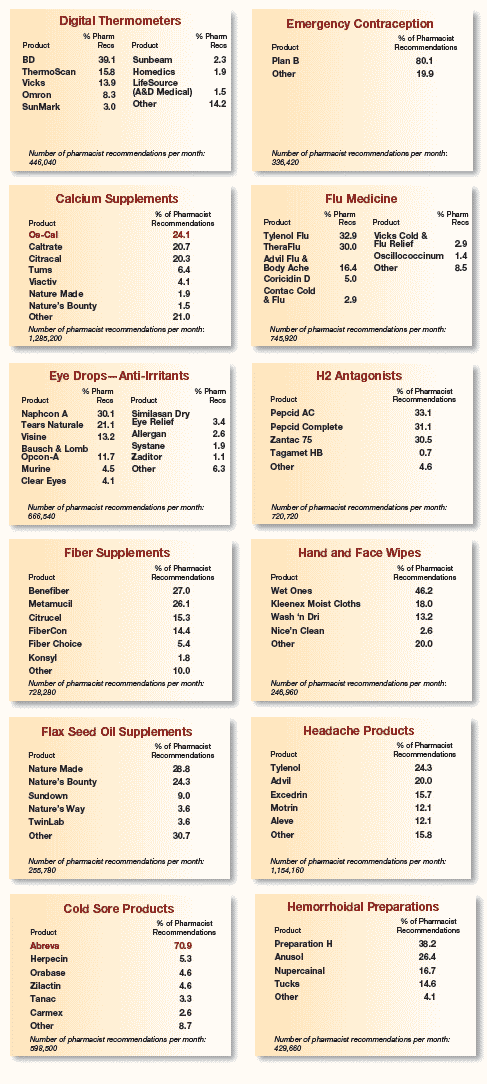

McNeil Consumer Healthcare recently launched "Answers in the Aisles: Increasing Understanding about OTC Medications"?a Web-based portal that provides content specific to OTC medicine use from advocates including the American Pharmacists Association and the National Council on Patient Information and Education. The site (www.AnswersintheAisles.com) offers tips on choosing and administering OTC products to both adults and children, and topics include reading and understanding product labels and the importance of proper dosing.


A national survey of 500 parents with children aged 2 to 12 years old gauged how parents feel about the safety and effectiveness of cough and cold medicines and their continued availability. Among the findings: 83% of parents reported in the past 12 months they had given their child an oral OTC cough or cold medicine to relieve symptoms; 66% of parents disagreed with the FDA removing these medicines for children aged 2 to 6, while 78% disagreed with the FDA removing these medicines for children aged 2 to 11 years; and 78% agreed that medicines for children aged 2 to 12 years should remain on the store shelves but with stronger labeling about appropriate use.
